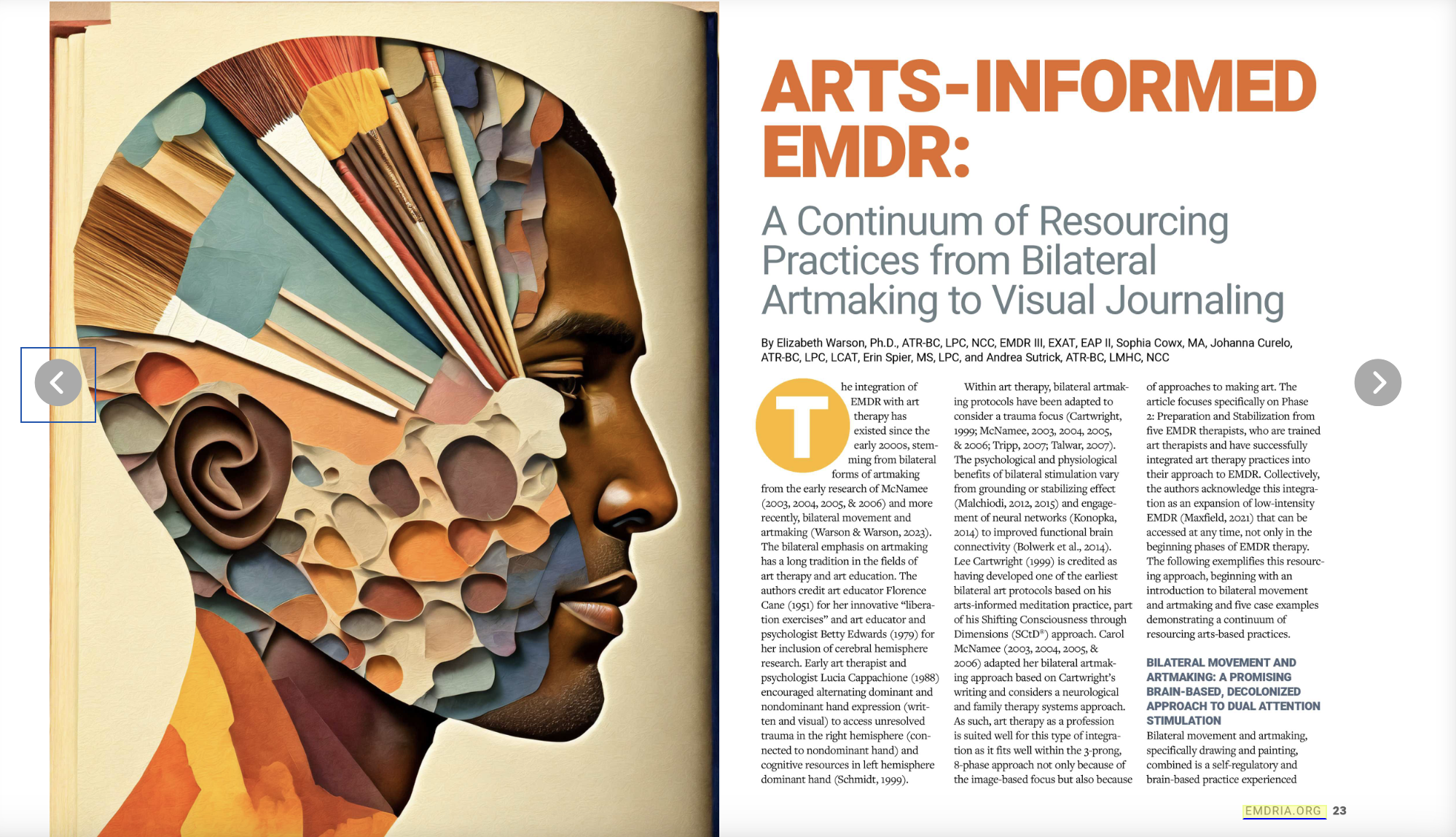What is Arts-Informed EMDR?
EMDR has been integrated with art therapy since the early 2000s with an emphasis on the bilateral movement found inherently in artmaking. Alternating the dominant and non-dominant hands while engaging in the arts or writing can help access trauma for healing. Moving back and forth between brain hemispheres can enhance connection and coordination. From a trauma-informed approach, bilateral artmaking can introduce a gentle path to EMDR, helping people acclimate to their therapy experience and build a working alliance with their art therapist. Art therapy uniquely connects at all phases of EMDR therapy and can be especially beneficial in the resourcing phase, whereby people find their unique ways to calming and grounding.
EMDRIA Go With That Magazine's Arts-Informed EMDR
Persons seeking therapy may be experiencing anxiety and depressive symptoms or relationship issues with their partners or loved ones. In a groundbreaking study, the Adverse Childhood Experiences (ACE) score became a way to measure trauma experiences. Persons with high ACE scores often experienced increased risks of social and emotional problems in adulthood. Grief is often a source of pain, not only with the death of loved ones, but loss of relationships or divorce, pets, job, financial stability, health, retirement or a friendship. The experience is multi-pronged and complex because a unique individual may have layers of traumas which have piled upon each other. As years pass, behaviors and feelings can intensify.
Art therapy helps with cumulative trauma by resourcing, to create and promote coping skills which can aid with managing stress inside and outside the therapy space. Artmaking combined with bilateral movements can activate bottom-up processing, a means to process difficult thoughts and feelings stored within the body. Participants can depict sensations on a body map which makes the inner self visible in an image. Once a sensation can be “seen,” participants can begin to apply healing through supportive colors, movements, breath work and more. Moreover, the act of making things can help participants gain insight, deepen connections and find coping skills to respond flexibly to life’s stressors. By weaving together the perspectives of EMDR and art therapy, the art processes and materials along with the bilateral approach in EMDR, participants can establish trust with their own inner voice through their creative self-care.
If you’re ready to find your balance and harmony and get to the root of the problem, feel free to reach out for a free consult.
You can also learn more about the work I do on the Meet Andrea page.
Ready to hold your creative space,
Andrea Sutrick, ATR-BC, LMHC
